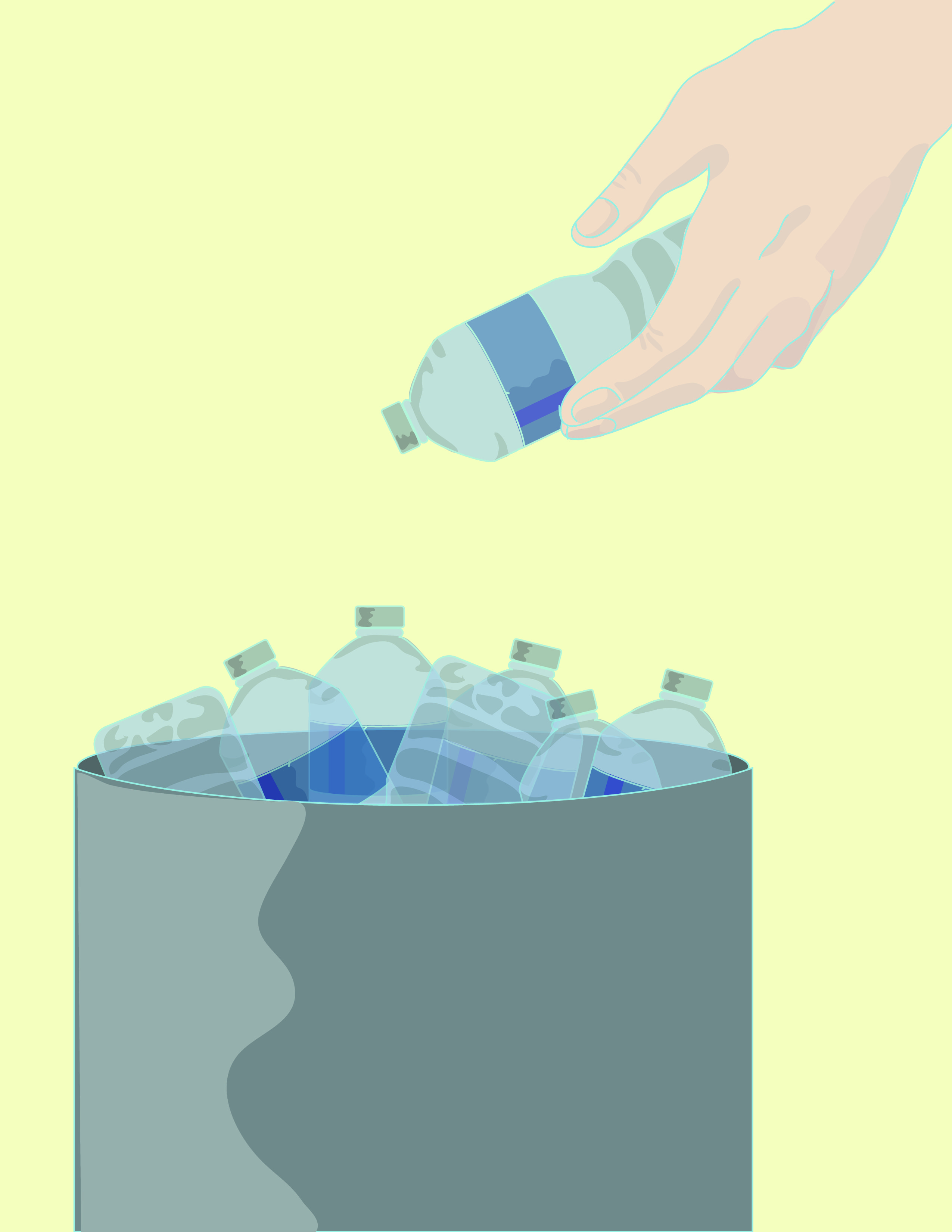Sandra Wenceslao: UCLA should join campaign to reduce plastic water bottle usage

(Amy Fang/Daily Bruin)
By Sandra Wenceslao
Nov. 13, 2017 10:33 p.m.
Students are no match for the hills of UCLA on a dry California day – at least, not without a sip of chilled water. Every day, students amble over to vending machines and swipe their BruinCards to purchase rejuvenating ice-cold beverages.
However, those thirst-quenching drinks come from plastic bottles that contribute to global pollution.
Ban The Bottle, an organization that seeks to prohibit single-use plastic water bottles, asserts individuals at colleges and universities consume more plastic bottles annually than those at many other organizations. The Water Project, which is aimed at ending the global water crisis and providing access to water across sub-Saharan Africa, states more than 80 percent of all single-use water bottles in the U.S. become waste – meaning colleges and universities are major contributors to plastic litter.
Because of this, universities across the country have taken the initiative to reduce plastic water bottle consumption. In 2011, the UC Berkeley student store stopped the sale of disposable plastic water bottles. UC Santa Cruz also joins UC Berkeley in the initiative to eliminate plastic water bottles at its campus through its Take Back the Tap UCSC campaign to end the sale of bottled water on campus, according to the Ban the Bottle website.
UCLA, however, is not on the list of schools that have joined the cause. The university has no comparable policy to reduce plastic bottle usage; single-use plastic bottled water is still being sold on campus by the student store and in UCLA’s many vending machines.
UCLA Sustainability needs to create a policy calling for a significant reduction of the sale of disposable plastic water bottles on campus. The policy must also better advertise existing and newly built water refill stations, or hydration stations, to make students and campus members aware of available water consumption utilities.
The UC’s Zero Waste Initiative, a program attempting to divert waste from landfills by 2020, has asserted Americans buy 25 billion plastic water bottles annually. The Zero Waste Initiative aims to recycle every single plastic bottle.
From the looks of it, though, UCLA may not meet that goal in time – especially given Associated Students UCLA’s plastic water bottle sales.
In the past fiscal year alone, ASUCLA’s campus student store sold approximately 162,000 units of plastic water bottles for approximately $339,000, said Patrick Healey, director of the UCLA Store.
Healey added the UCLA Store sold 7,200 fewer plastic water bottle units in the past fiscal year, going from 169,200 units during the 2015-2016 school year to 162,000 units during the 2016-2017 school year. While this is a step in the right direction, there are only three more years until 2020. Even if ASUCLA keeps decreasing plastic water bottle sales at the same rate as it has in the past two years, it won’t be able to bring down its plastic waste contribution in time for the UC’s goal.
The key is to make students and campus members aware of other water options on campus. Giving students and staff more ways to refill their reusable water bottles, such as hydration stations, can help with this.
And there are other examples on campus that can serve as inspiration. Bonny Bentzin, deputy chief sustainability officer for UCLA, said that over the coming year there will be new signage on outdoor recycling containers – something that has already been implemented on the Hill. The signage, along with a change of liner colors to match the classifications of waste – green for compost or organic waste and blue for recycling – is meant to improve sustainability efforts by clarifying the type of waste that goes in each container.
A similar change should be made across campus with all existing and future hydration stations. As of 2013, there were 28 hydration stations across campus, ranging from the South Campus Geology Building to the North Campus Broad Art Center. Still, students who wander to buildings such as Bunche Hall, the Luskin School of Public Affairs or Moore Hall are stuck looking for hydration stations where there aren’t any. Students can be made aware of this and more easily find the closest hydration stations if proper signage is implemented.
UCLA needs to employ a solution that encourages students to use reusable water bottles while making them aware of UCLA’s goal to reduce plastic consumption. Installing more hydration stations while better advertising existing ones can do just that. Such a policy wouldn’t aim to completely eliminate the use of plastic water bottles, but instead make students aware of their choices and the impacts of those decisions.
Some may say that reducing the use of disposable water bottles won’t make enough of a difference in slowing plastic consumption. After all, even if plastic water bottle sales are reduced, students will still buy other beverages in plastic bottles. But in 2017, bottled water was the top drink sold in the U.S., according to one metric from the Beverage Marketing Corp. Adding more hydration stations can help reduce the consumption of plastic water bottles and can make a notable contribution toward the UC’s goal of achieving zero-net-waste production by 2020.
While water bottle sales may go down for ASUCLA, the association can further advertise reusable water bottles. During each quarter sale, ASUCLA can make reusable water bottles clearly visible on the sales floor or on the online website. ASUCLA can also sell more reusable water bottles for cheaper prices, which will encourage students to buy them instead of single-use plastic water bottles.
The UCLA Store offers various options for reusable water bottles. Students shouldn’t have to stand in line multiple times a week to buy a plastic water bottle when a reusable bottle would do the trick.


